Get Inspiration on How to Integrate 3D Design Packs Into Your Projects
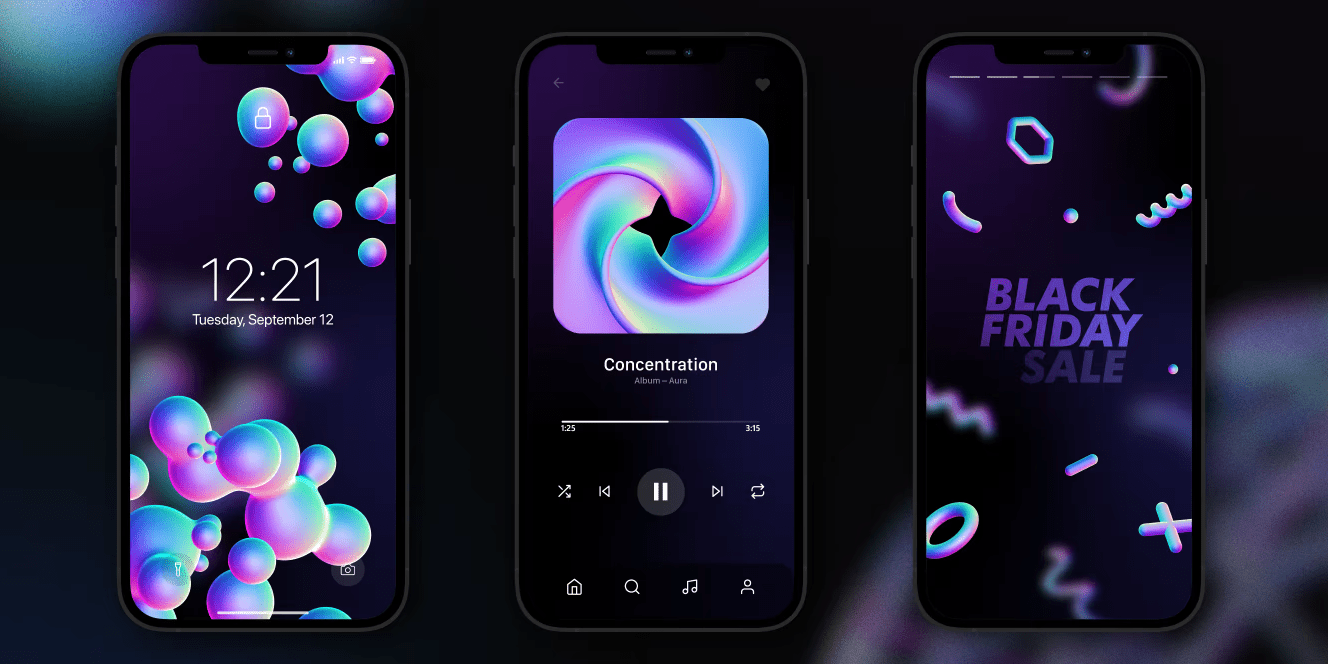
Surely you have heard about the importance of captivating and engaging users using unconventional design techniques, and the truth is that each day users become less impressionable, making it necessary to get into the latest trends to create a true impact.
Right now, the way to go is to incorporate 3D design elements in your projects to take them to an even higher level. And if you’re doubting the power of using this type of disruptive graphics, just keep in mind that 3D graphics allow you to:
- Stand out from your competitors who are used to going with flat designs
- Create more engaging and immersive interfaces or experiences
- Connect through the senses to impact emotions and purchase decisions
- Increase average session durations
- Increase your Conversion Rate Optimization
Plus, one of the best things about entering the 3D digital world is getting to play around with creating disruptive and eye-catching designs! So if you are up for a challenge and want to lift your ideas off the page and bring them to life with 3D, then let’s get started.
What Is 3D Design
The concept of 3D has been used for years in the film and video game industries and is based primarily on creating a sense of physicality to what can be observed.
For example, in the first 3D movies that were projected, their appeal was based on the fact that the characters and objects “popped out of the screen” almost as if they could be touched. Well, this same principle applies to graphic design, and this effect is built on the concept of depth.
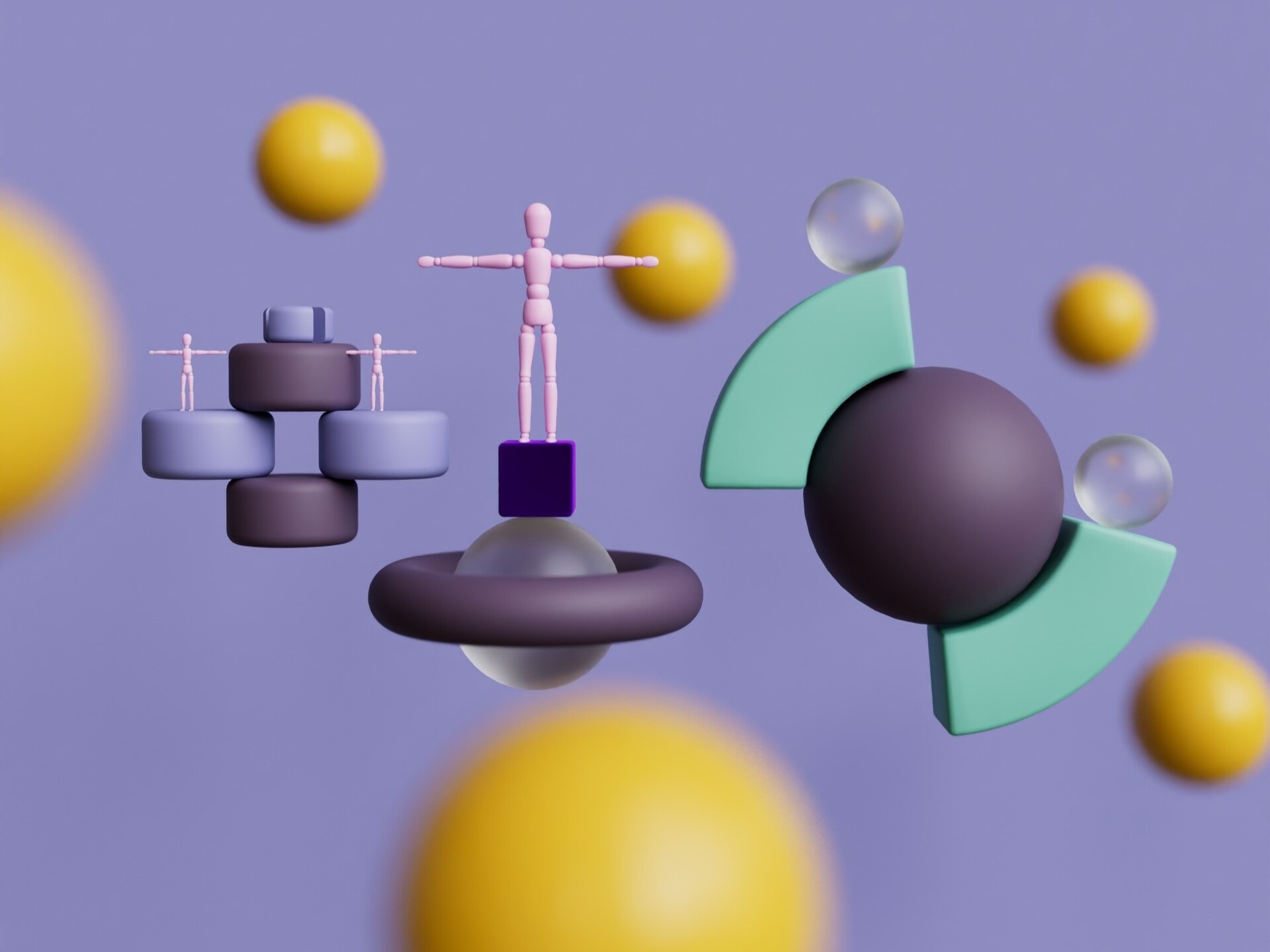
The usual flat designs we are used to are created using 2 dimensions, horizontal and vertical (X and Y). With 3D we add the third dimension of depth (Z).
Think of your canvas as a deep box rather than a flat surface. By imagining it this way, you unlock all the possibilities that come with playing around, placing objects in different “layers”, so to speak, just like a real-life scene or a photograph’s focal planes.
2D vs 3D Illustration
We already covered a little bit on this, as the main and most obvious difference between 2D and 3D is the number of dimensions on which the designs are created. While 2D is created using horizontal and vertical dimensions, 3D uses the same two dimensions, plus depth.
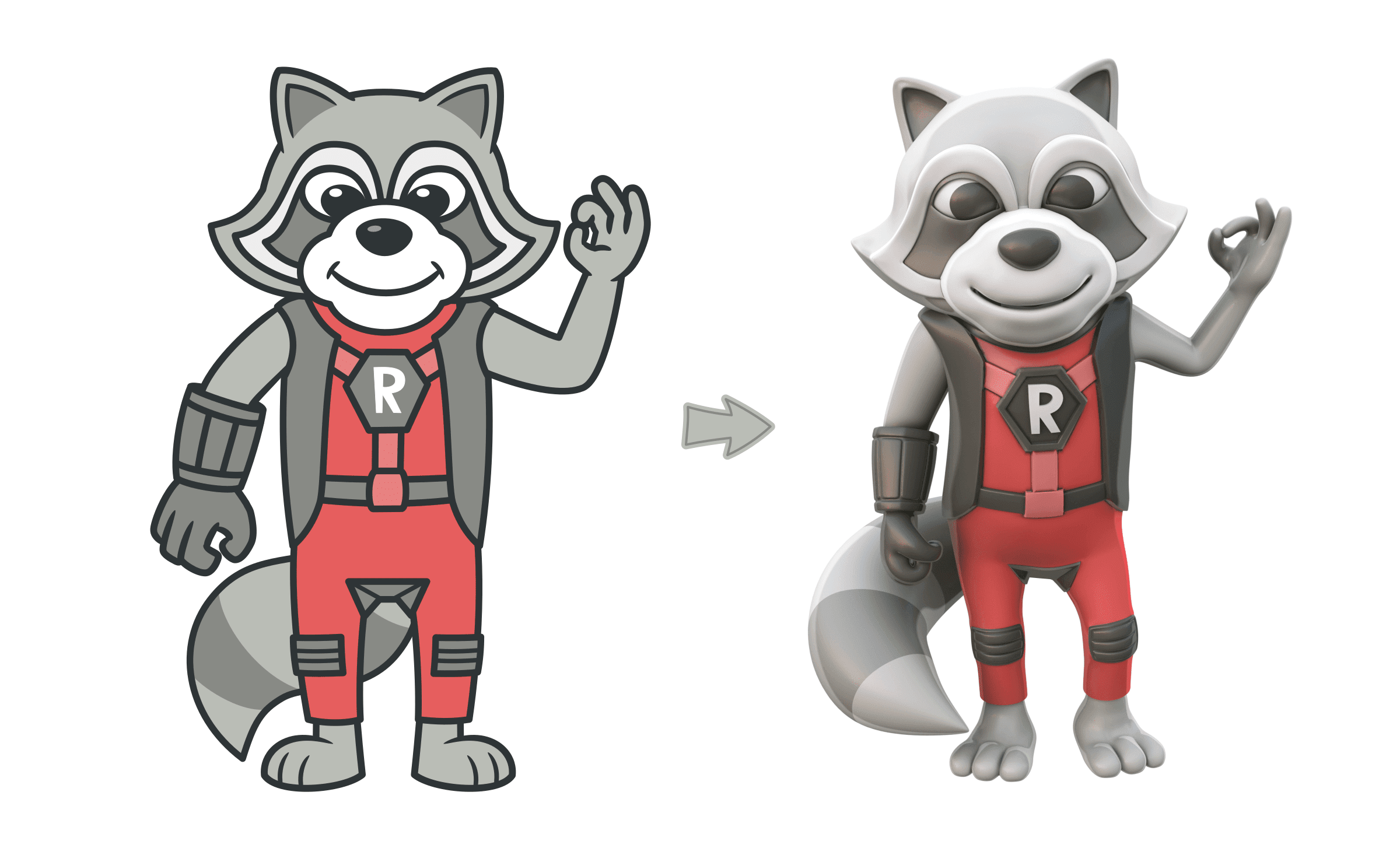
The inclusion of the Z-axis is the only technical difference between the two styles. However, as you can see in the image above, by adding depth we are adding life to the graphic, making it look completely different and more detailed, with realistic shadows and lighting, which wouldn’t be possible in the 2D version. Also, colors tend to change, looking more vibrant and contrasting.
To better understand, this is what happens when transitioning from 2D to 3D. Many iconic video game characters underwent this process because they needed to enhance visual quality and adapt to higher-resolution formats. This allowed many of the details the creators had in mind for their characters to come to life, evolving and adding value to their designs.
In this line of thought, with 3D, you can create more captivating visuals that enhance the message and make it much more memorable for your audience, which is exactly what we want to achieve.
Design Keys To Use 3D Packs
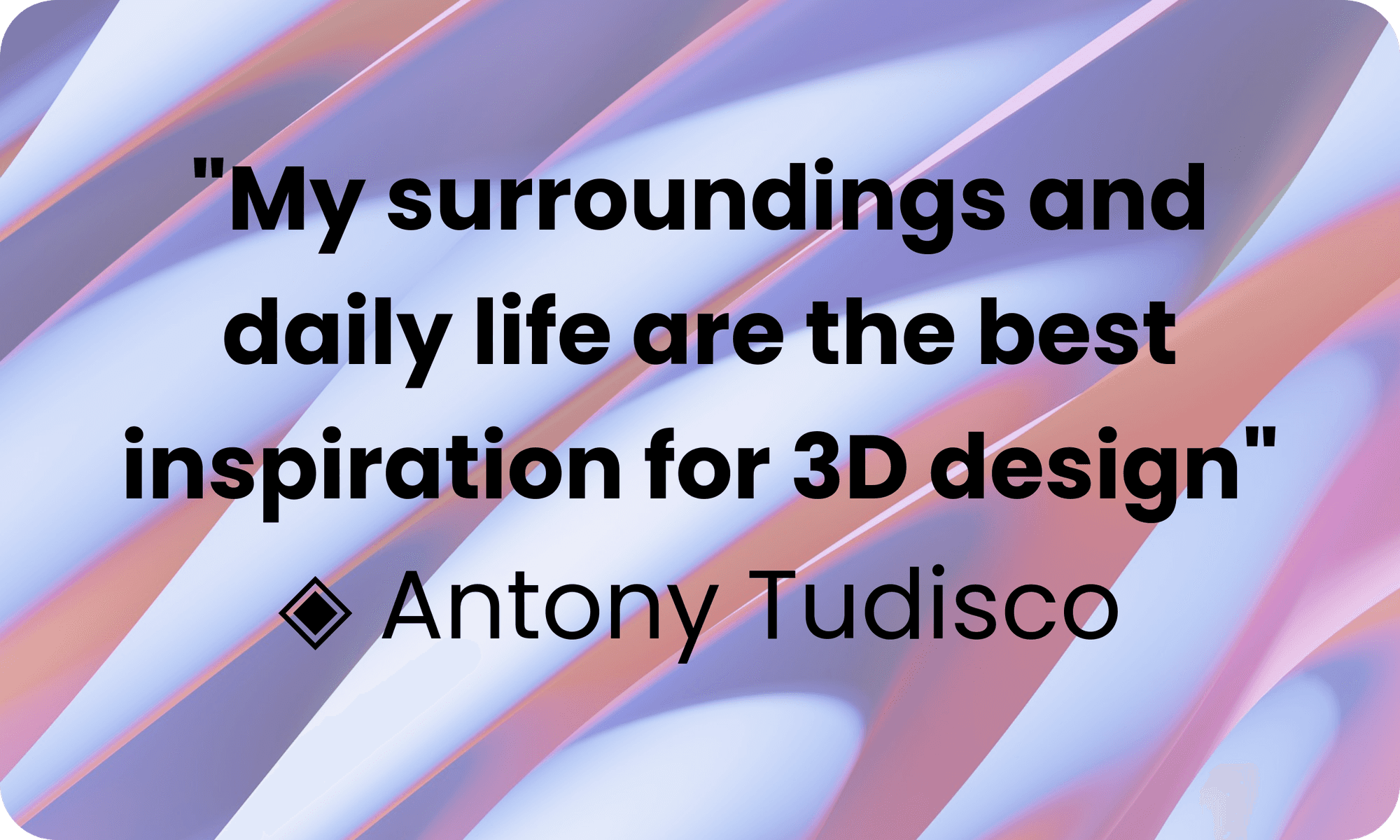
One of the most important steps when learning how to use 3D designs is to experiment and have fun. Still, there are basic design tricks that you should keep in mind in the process, so here are a few tips that will be useful to get the most out of this resource. Using 3D modeling and rendering software has significantly broadened, empowering designers to craft lifelike product prototypes and visualizations with remarkable realism. (Adobe)
Choose A Style And Stick To It
Designs don’t need to be hyper-realistic to fall into the 3D category. On the contrary, there are many different illustration styles such as isometric illustration, abstract, broken proportions, surrealistic characters, etc; and you’re free to experiment with all of them!
However, when it comes to designing for a single project you should keep a consistent visual style. Go for the style that best suits the brand aesthetic or communicates the particular purpose of the project and be sure to maintain it throughout all pieces.
An effective way to achieve this is by using 3D design packs that already have a defined visual identity, like this 3D General Icons Pack that you can easily mix-&-match.
Don’t Overuse The Resource
When exploring ready-to-use 3D resources on the Internet, you may find a lot of packages with stunning designs and great quality, so much so that you may want to download and use them all at once.
However, using too many 3D graphics at once can saturate the design making it look outdated instead of modern, and consequently saturate the target audience. So choose a couple of 3D elements and tone it down with the rest of the composition.
Create Emphasis
Related to the previous point, use 3D to intentionally guide users through your design. Highlight the elements that you want your users to see first or even where to click to ensure the best experience for them and results for you. Being such an eye-catching and captivating style, it will inevitably be the first thing to be noticed, so choose wisely and use this to your advantage!
Use 3D to intentionally guide users through your design.
Combine Flat And 3D Design
Don’t think of 3D and 2D as incompatible elements, as we know that opposites do attract. When done correctly, 3D and flat designs together work really well. In fact, complementing 3D with flat elements can have a visually provoking effect while bringing unity to the overall design.
It is the perfect touch to make the design come to life, giving that contrast and extra dimension to make it pop.
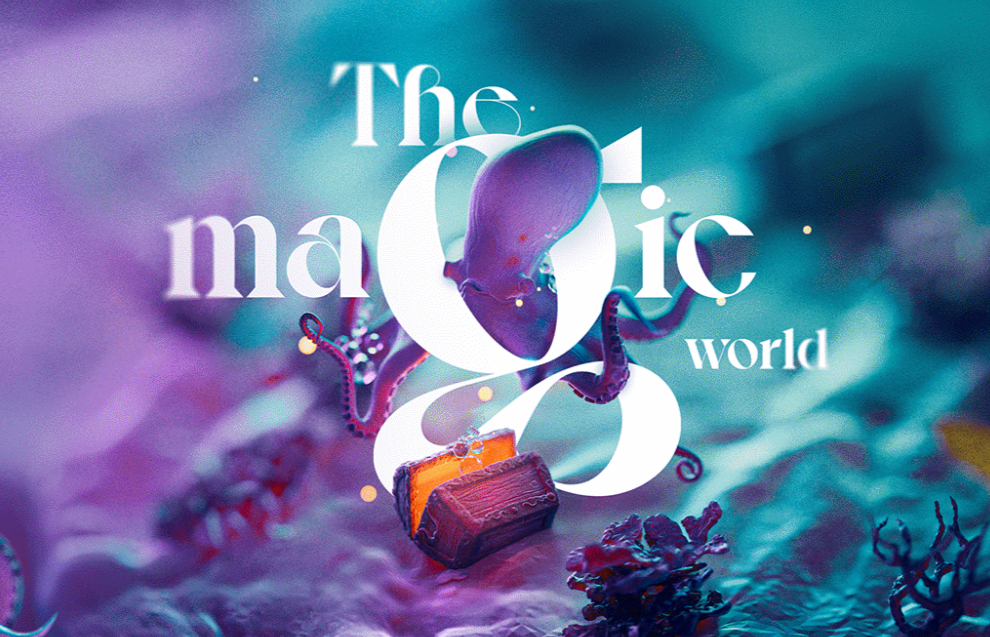
Likewise, we show you the main elements of 3D design, as we can use them in different media but they have different characteristics that are essential for developing a good design.
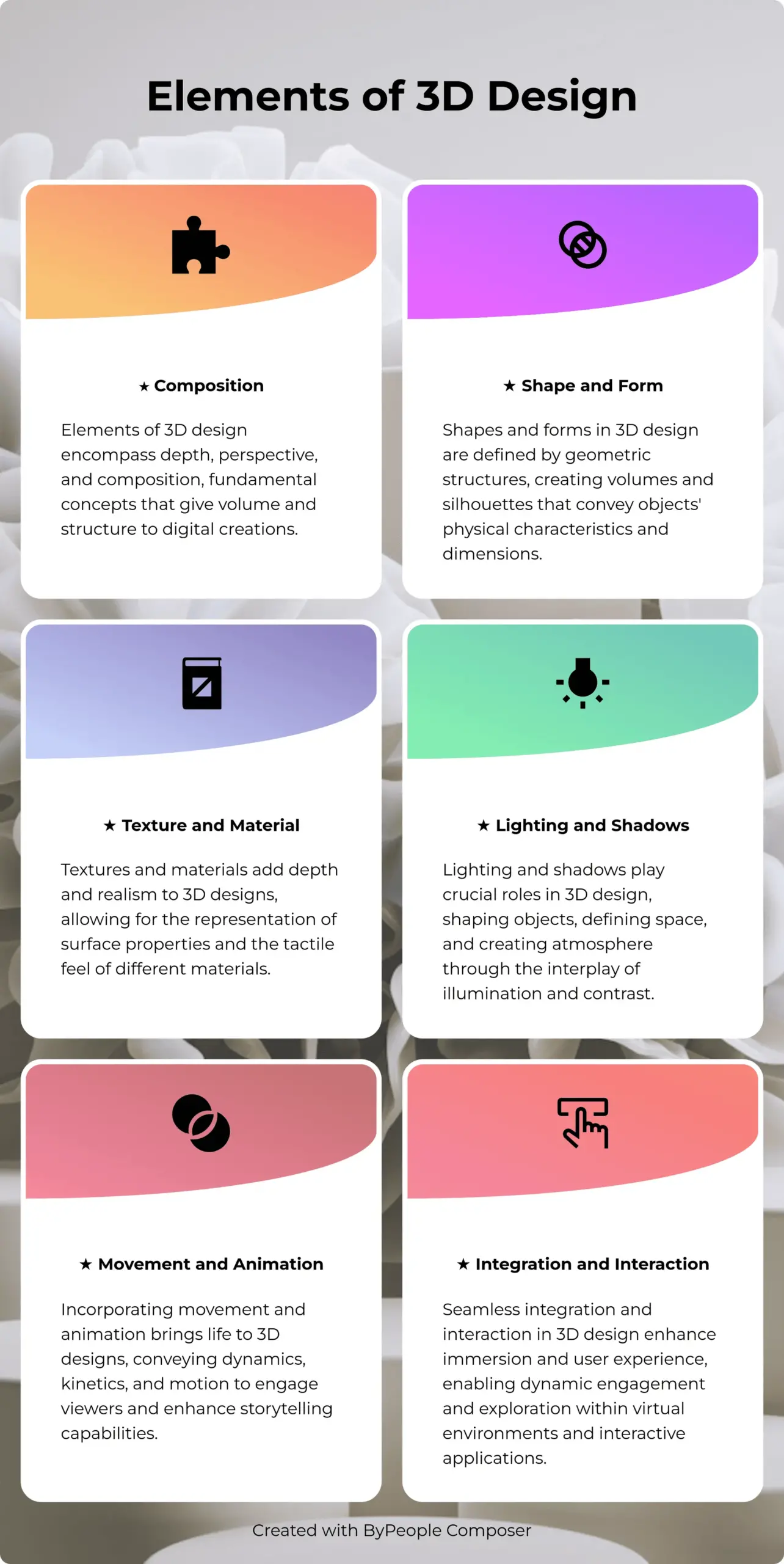
Be Careful With Mindless Use
Don’t use 3D just for the sake of it. We’ve talked so highly of 3D design that you’ll probably want to use it everywhere, but make sure you have a well-thought-out purpose to integrate 3D visuals by asking yourself:
- What can 3D elements do for my project?
- Is that something that would interest my target demographic?
- Does it align with the brand aesthetic?
- Does it communicate what we are trying to convey?
I am going to give you an example of why we have to make ourselves this questions, because 3D can be useful but in other escenarios it can be unnecesary.
Buying items online is an easy, convenient, and effective task, but sometimes 2D images fall short of providing customers with a fuller product experience, as there are details that such an image cannot convey. 3D helps in this regard, allowing for a better perception of what is being purchased by converting a 2D product photo to 3D.
Thus facilitating the purchasing process and making it more accurate. Knowing the product details benefits not only customers but also brands or companies, as it ensures that the purchaser is not disappointed with their acquisition, having a more realistic idea of what they are getting, thus helping to avoid returns and negative experiences that may discourage consumers from making repeat purchases.
That was an useful case, but, remember that the best route is not always the most visually appealing to you personally, so think strategically about your design to achieve your desired goal.
Uses Of 3D Designs
One of the best things about 3D graphics is how versatile they are. A few years ago its use was limited to a few industries in creative areas such as video gaming, movies, and animated short films; but with the evolution of technologies that make the creation of 3D graphics more accessible and the new needs that arise from the massification of digital media, today we can see that 3D has expanded to almost all industries, you can even find Cute 3D Animal Illustrations!
These are some of the industries in which you will most commonly find 3D designs and the most frequent uses they tend to have within them.
- Advertising and marketing: This is probably the industry in which 3D has much more scope and is one of the reasons why its use has become so popular. How? Through social media assets, magazines, branding, product launches, campaigns, billboards, flyers, and prints.
- Music: The use of 3D in this industry is closely related to graphic design, since it is used to develop the concept art of many artists, whether it is for their album covers, merch, or design pieces overall.
- UI Design: This is where the accelerated growth of 3D is most visible, as this trend has recently taken over the digital space, we see a more dynamic and interactive design to develop websites, mobile screens and apps, interactive content, and even avatars
- Data visualization: This may be the least explored application of 3D so far, but keep an eye out for this one because sooner than later this will be the latest trend. Still, it has been widely used to display numerical information in a dynamic way, such as pie charts or bar graphs in apps and infographics.
Get Inspired!
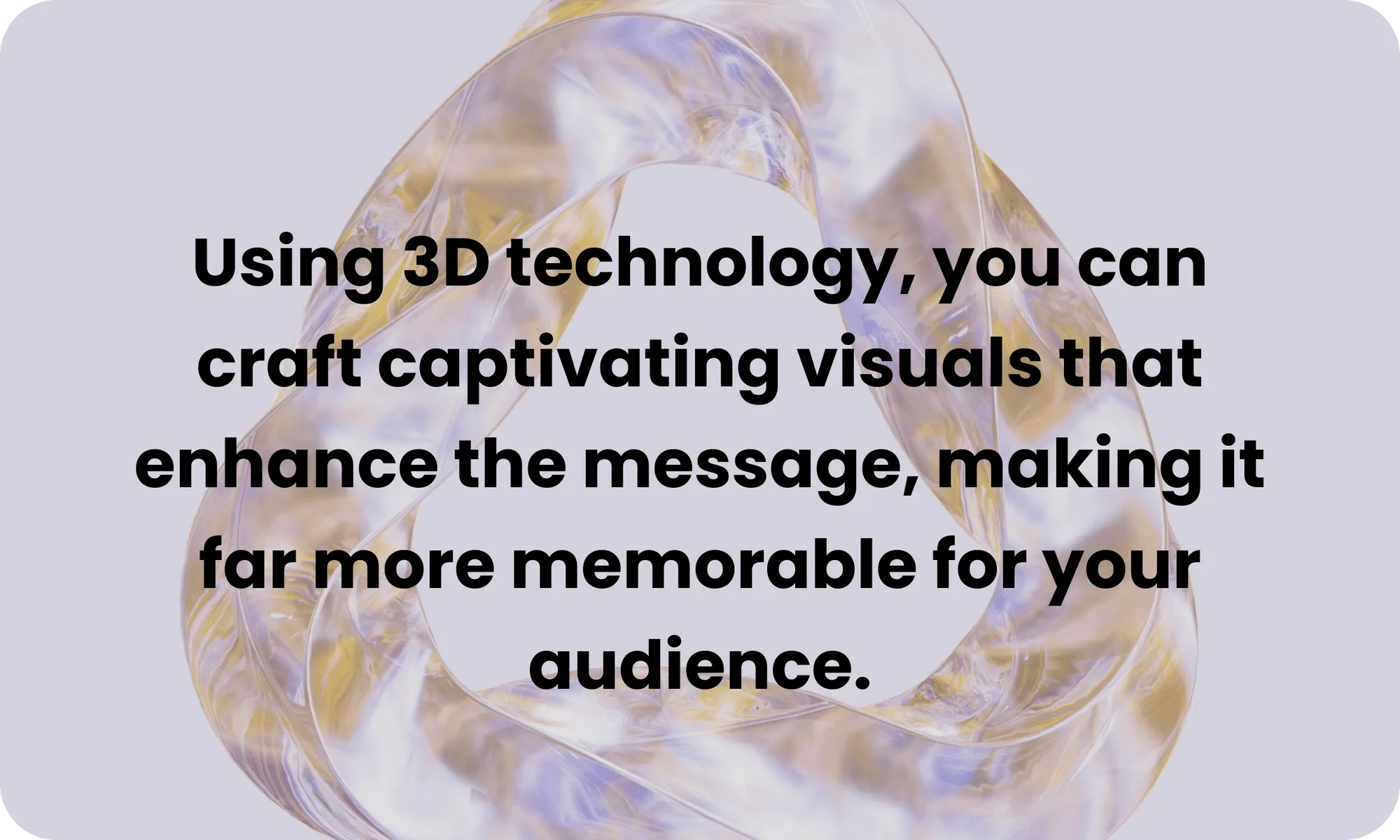
Now that 3D illustration is the best way to go for your project, it’s time to create. But don’t panic if you still don’t know what you want to do with this valuable resource, you have plenty of options and ways to integrate 3D into your creations.
Here’s a dose of inspiration for you to get an insight into stunning and exciting ways to use 3D illustration in your projects. You will see that with the diversity of styles and looks, the options of what you can create are endless, so let’s get creative!
Venture Into 3D Typography
Don’t be afraid to explore 3D characteristics in typography. As you can see, it’s an application that is completely different from the usual fonts and will catch everyone’s attention while ensuring message recall. Check out this 3D typography pack, it’s functional and it also looks cool!

Enhance Your Presentations
Presentations can get a bit dull; they tend to be flat and often are not backed up by visual tools that engage the viewer. Something you can do to turn the typical presentation around is to add 3D elements that make your slides more dynamic. With this Creative PowerPoint & Keynote Slides Bundle, everyone will want to see your presentations.
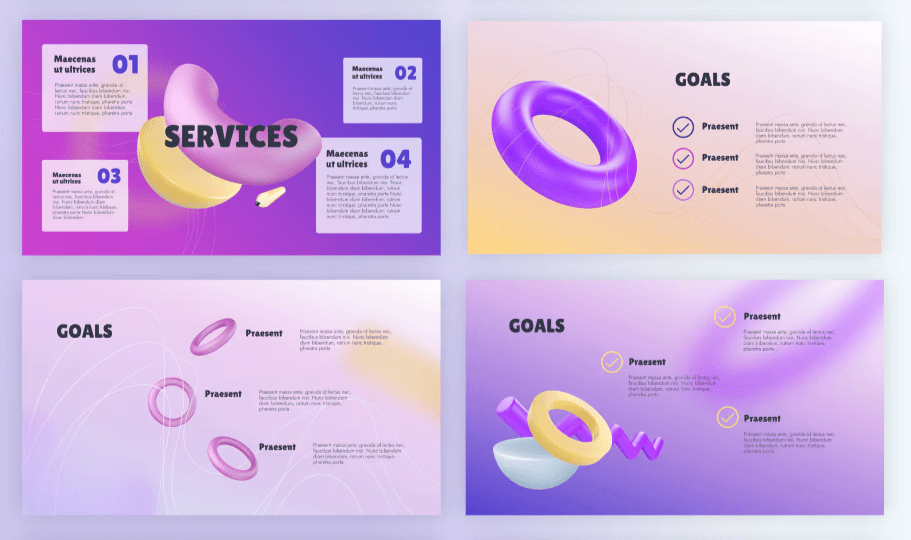
Try Going With Small Icons
Most of the time we see large and complex 3D compositions, which can be a bit intimidating. Yet sometimes, in design, bigger isn’t better. Don’t underestimate the power of integrating small but visually powerful details that enhance your design just the right amount, like this collection of 80 3D Icons Pack.
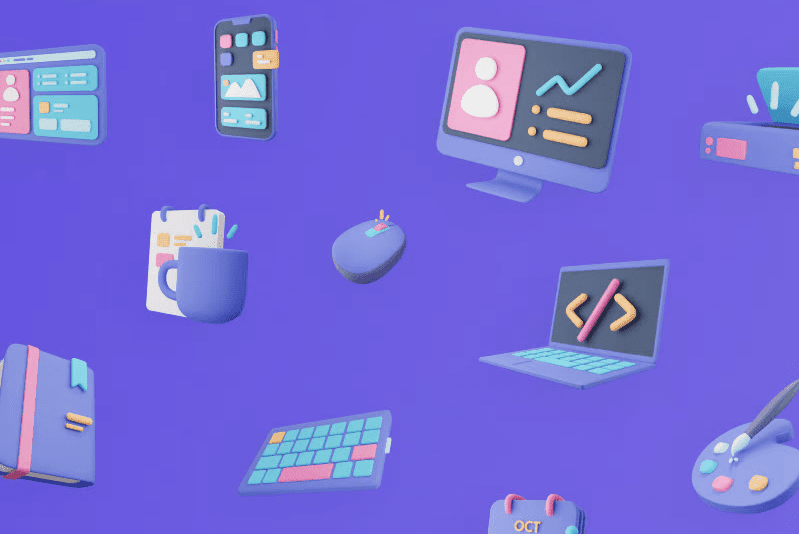
Use Complementary Shapes
Let’s say you want to have a minimalistic yet eye-catching design, but you don’t really know what visual element to add. Well, abstract 3D shapes are a no-brainer to achieve this. Just by inserting a few elements, you get an attractive graphic in no time if you go with a high-quality use-ready collection like this 3D Dimensional Shapes Pack.
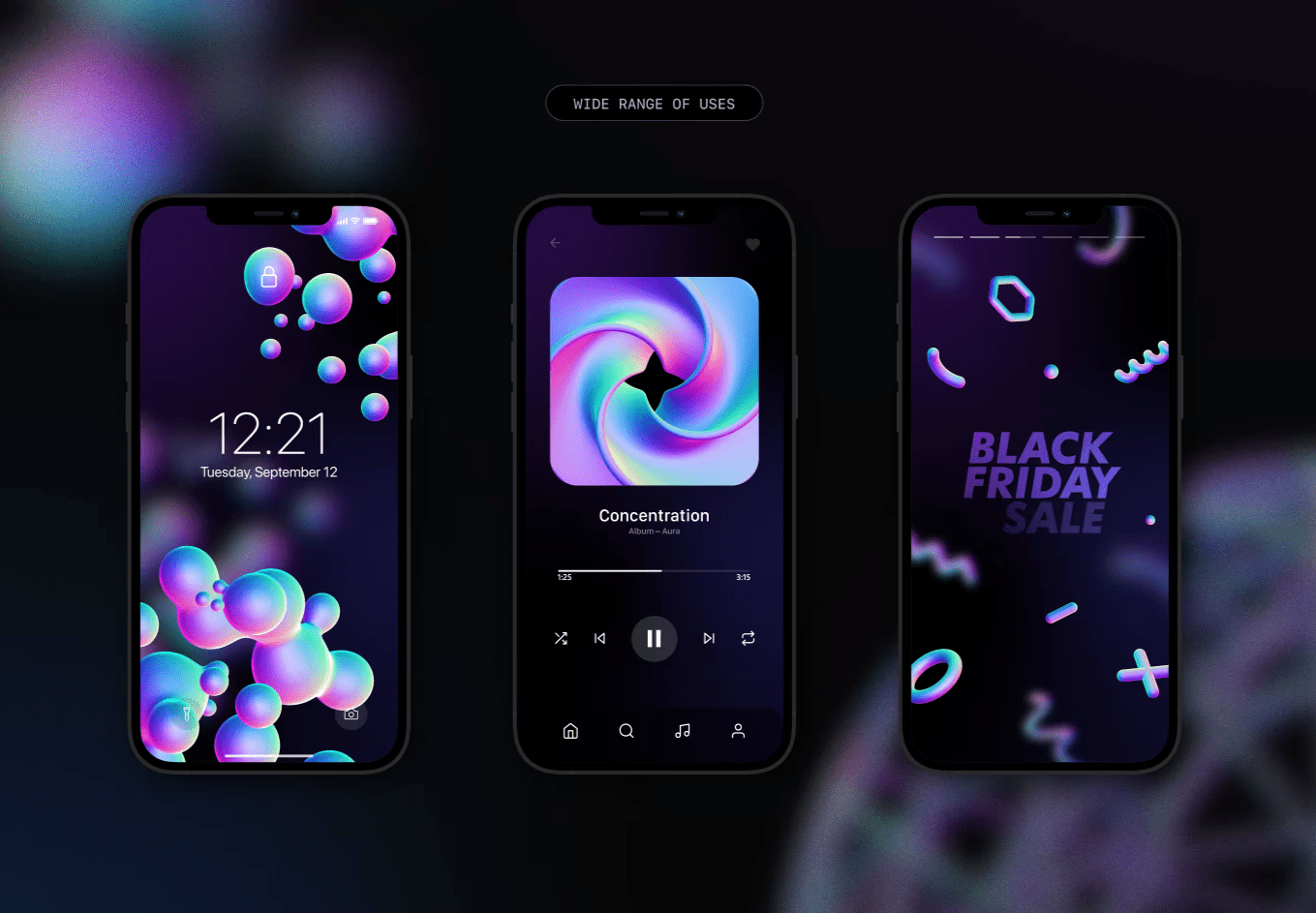
Pair 3D Illustrations With Mockups
How about using 3D character designs to show mockups of your products? Like in this collection of 3D Hands iPhone Mockups you can insert as many designs as you want inside the device frame, so it’s perfect for showing previews of your projects or content.
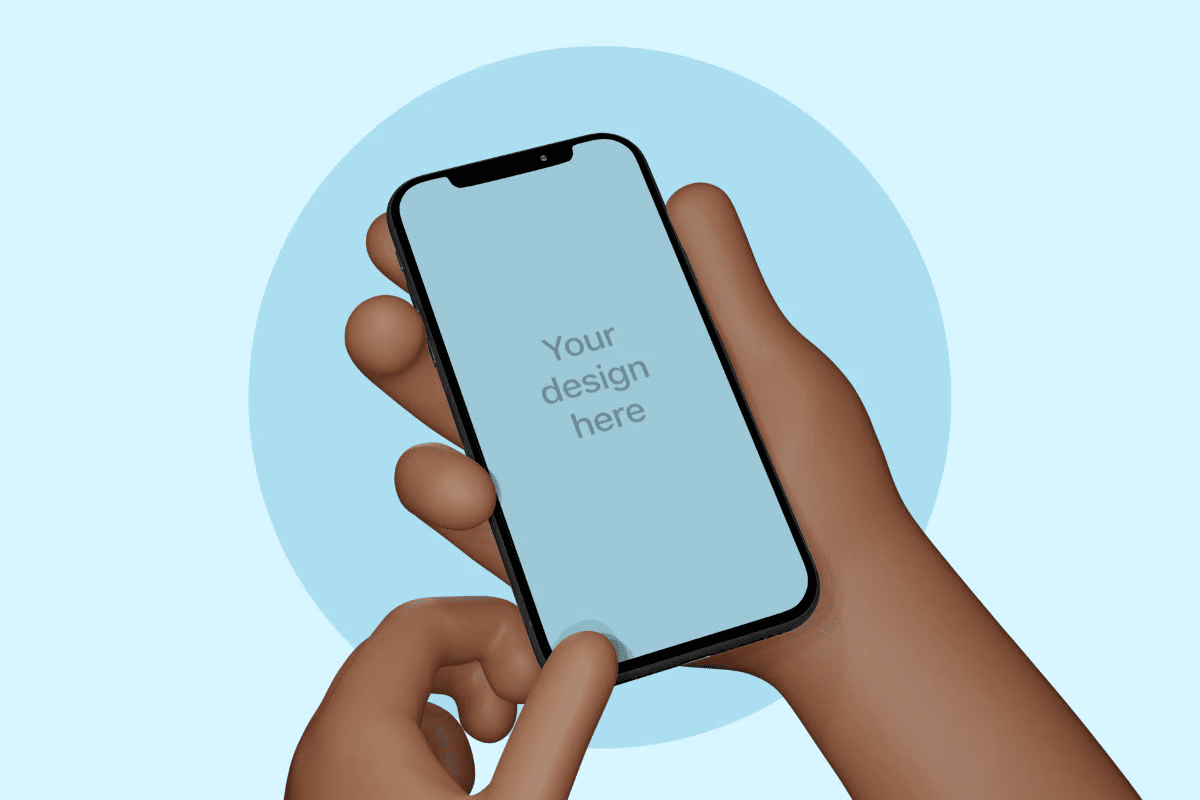
3D Icons by Iconshock
3D icons are a neat complimentary element that you can use for your landing pages, app screens and digital compositions.

Have 3D Elements Interact With Your Product
In this campaign for Huawei Nova 5T, a young and charismatic 3D character called Hu interacts with the product, making a collaborative use of 3D with photography.
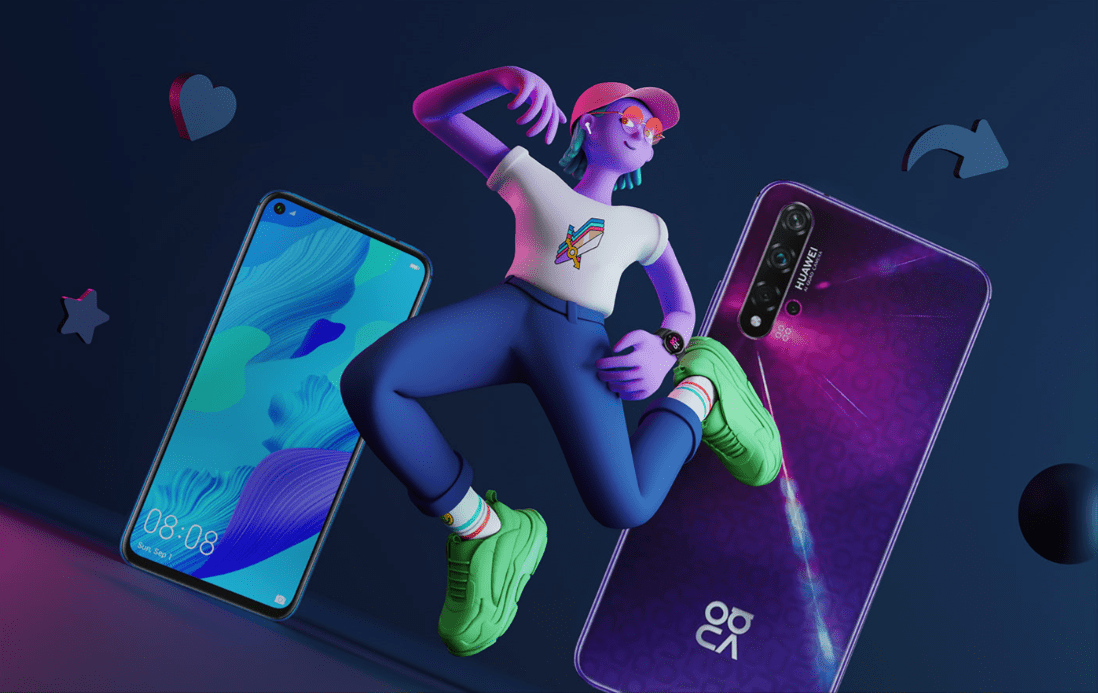
Create The Impossible Frame
There are things that photography just can’t do, that’s what 3D illustration is for. Create the composition of your dreams no matter how realistic or not it is. When it comes to 3D, anything is possible!
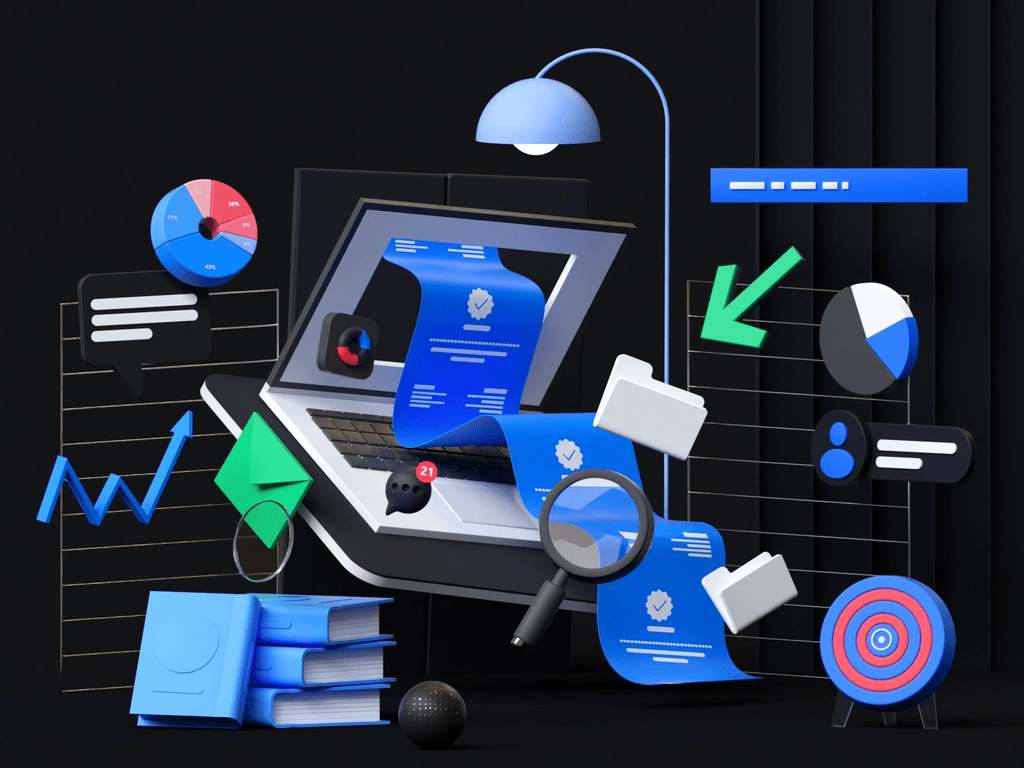
Lift Cities Off A Map
Another 3D application that is very much on trend is to lift city maps off of flat surfaces to create a more true-to-life depiction. This is also a very popular resource in infographics, so keep this one on your radar.
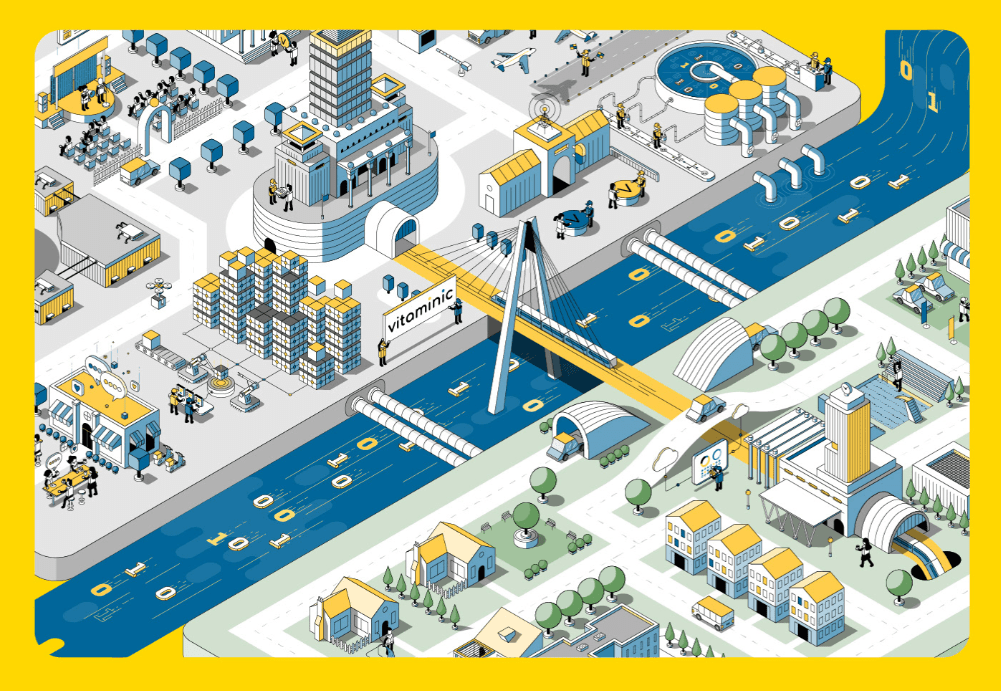
Show Off The Fashion
What better use of 3D than to apply it to the world of fashion? Take this edition of the New York Times as an example, showing how to dress for different social occasions. The characters don’t have hyper-realistic features, but the clothes look like you could almost touch them.
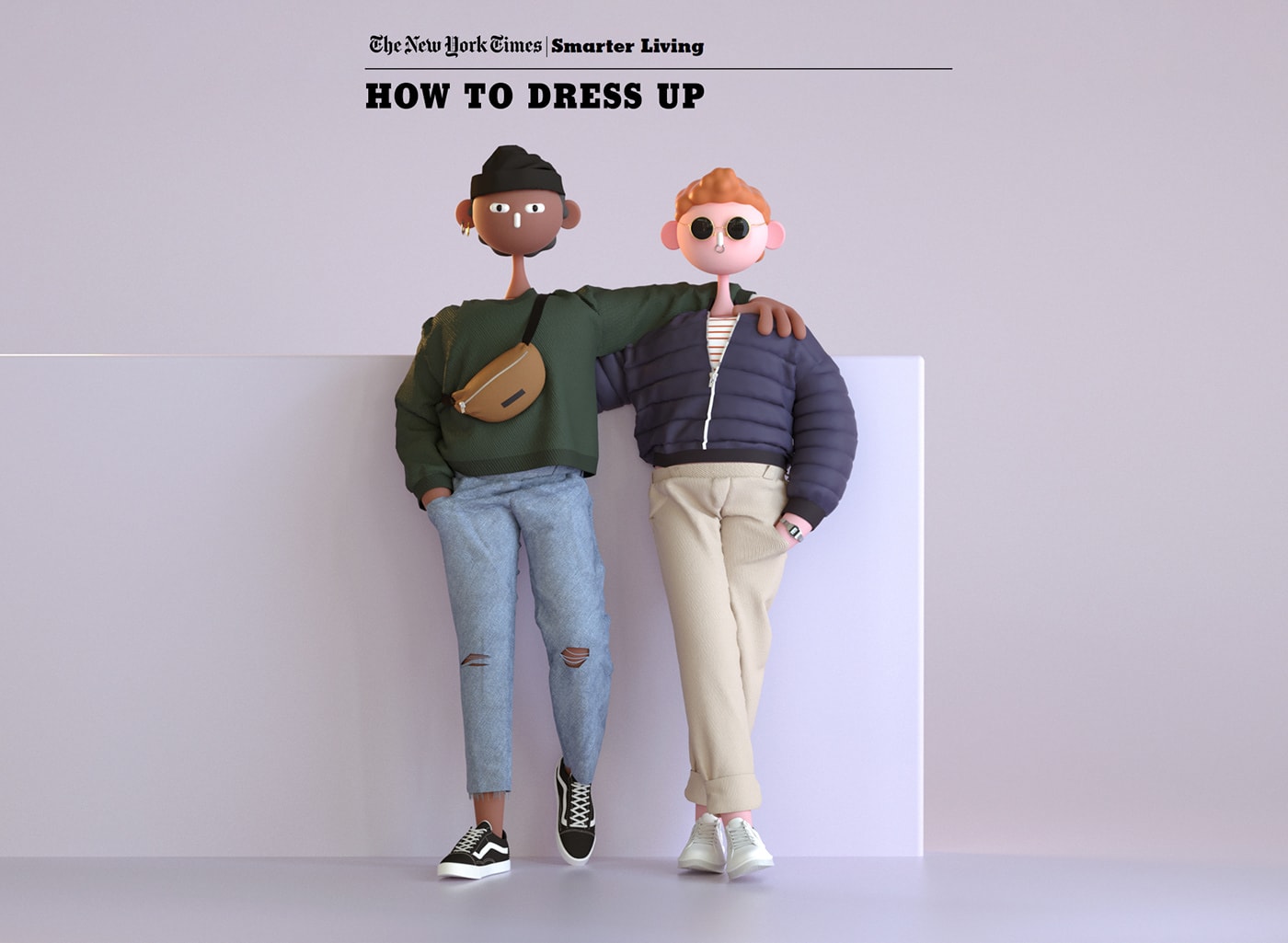
Social Media 3D Icons
Using eye-catchy icons for your social media profile links will ensure nobody misses them.

Take Something Boring And Make It Exciting
Let’s be honest, Excel sheets are our biggest enemies. That’s why data visualization methods that are fun to look at are perfect, not only to grab attention but to make the data easier to interpret.
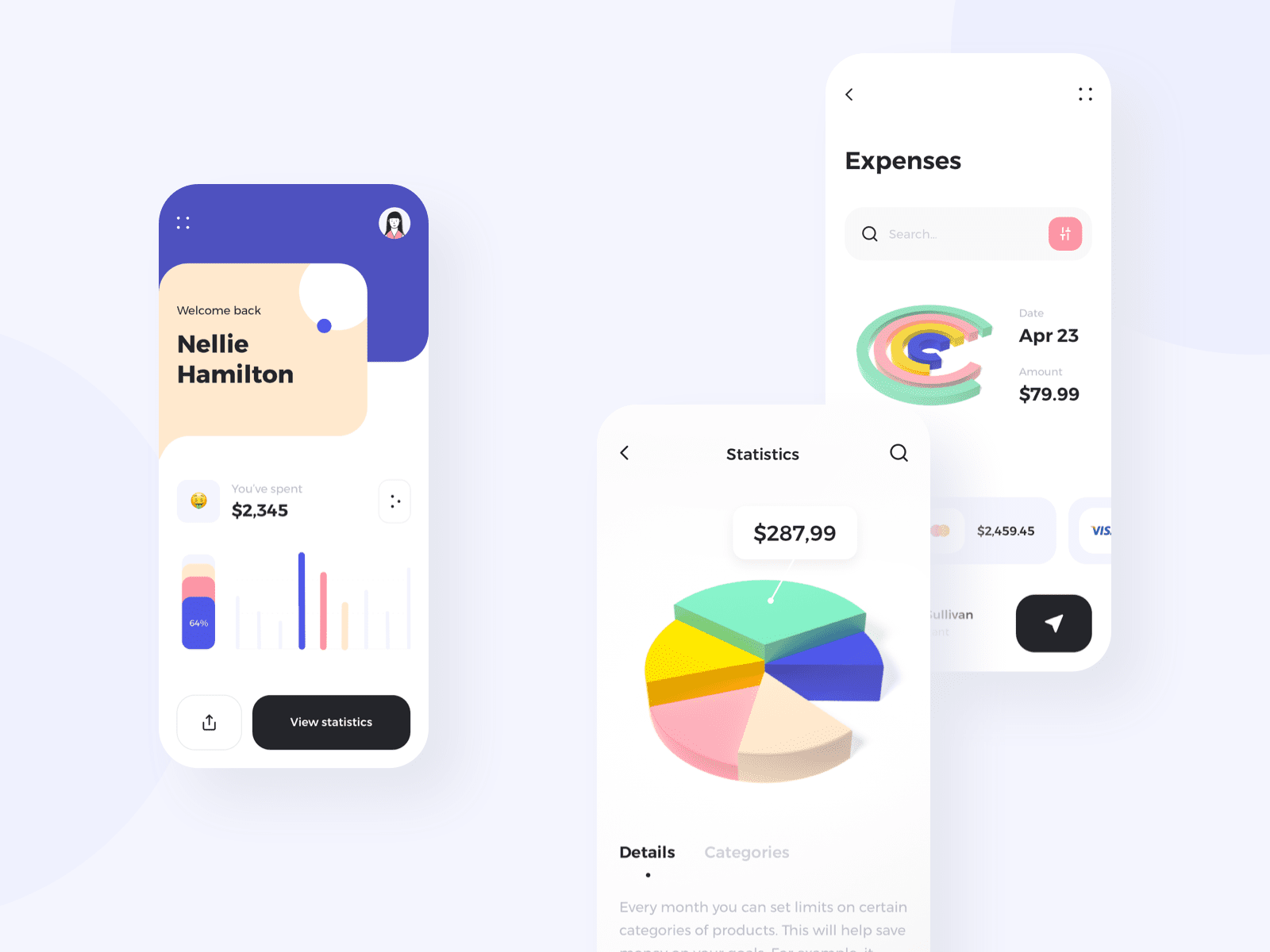
Explore 3D In Other Formats
Dare to take your 3D designs out of the virtual format. How about getting your design onto a t-shirt, billboard, magazine, or shopping bag, like this example? Your illustration will look just as awesome in print formats, so give it a try.
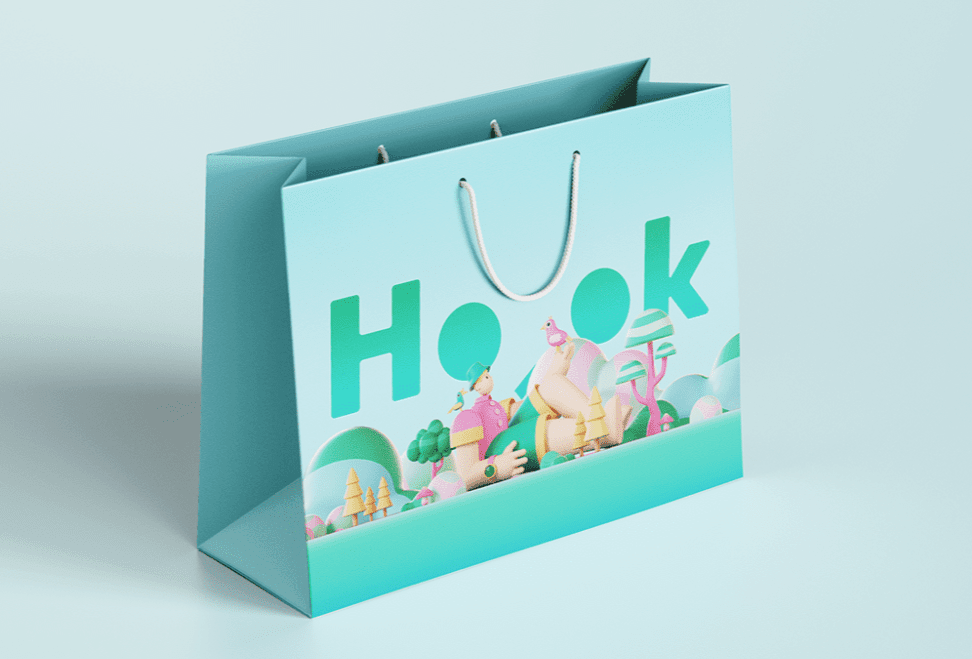
Involve The Platform With The Design
This is what we call making the platform part of your design. Look how amazing the depth effect looks using shadows and lighting, and taking advantage of the space generated by the “wall” to place the copy and call to action. It makes you feel like you could walk into this room.
AlsoThe 3D effect of expressing patterns on graphic design is a common design technique used by designers to attract the attention of viewers (Application of 3D Design Software in Graphic Design, 2020). So if you are looking for this impact 3D is a great option for you.
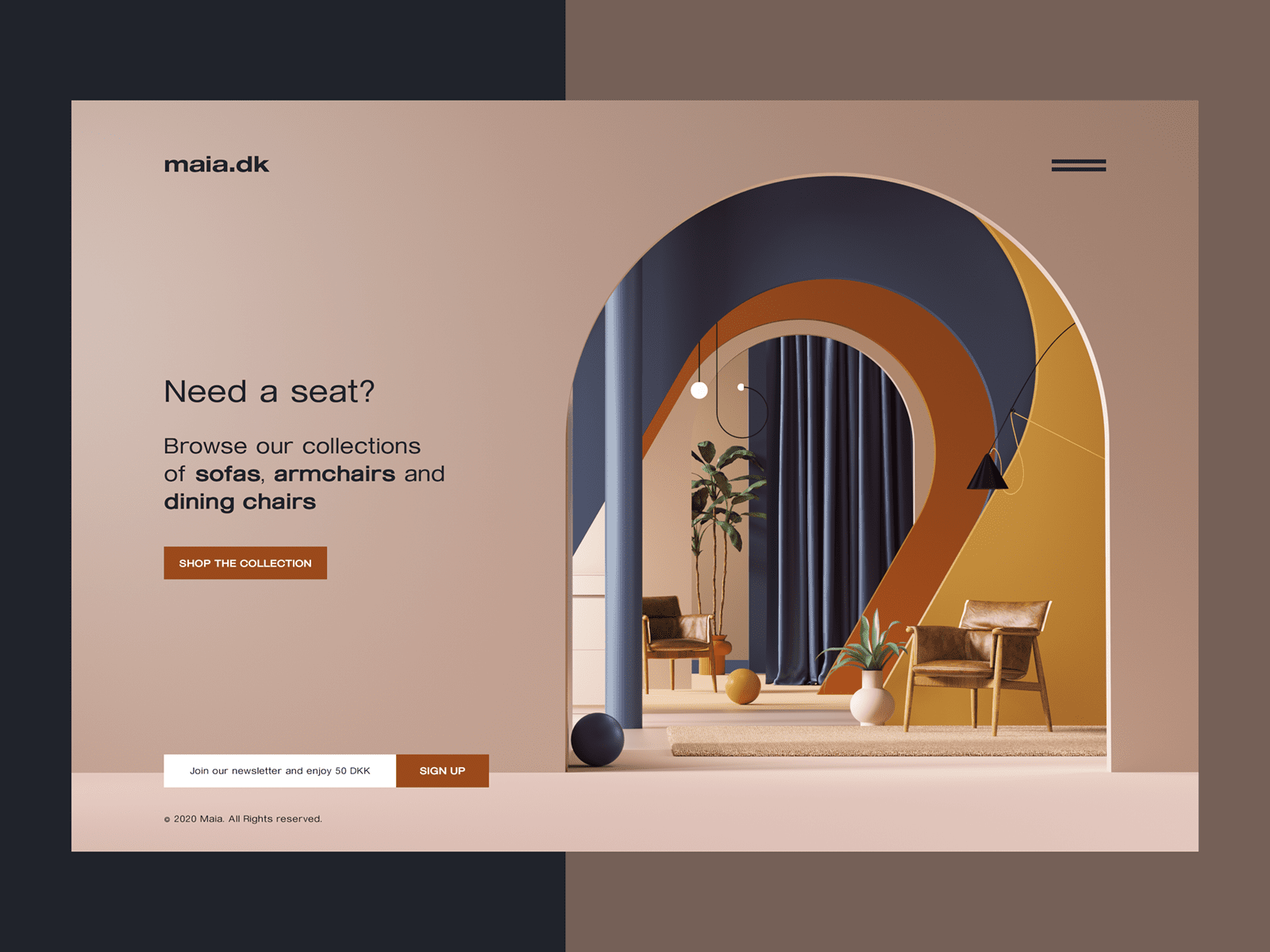
Mix Photography And 3D
Creating compositions that complement real scenes with 3D graphics will give you results like this one, in which digital elements such as mobile app widgets take over the physical world —phygital at its best. You can also use this resource to place a product in the actual context in which it is used, so you have plenty of options to explore this idea.
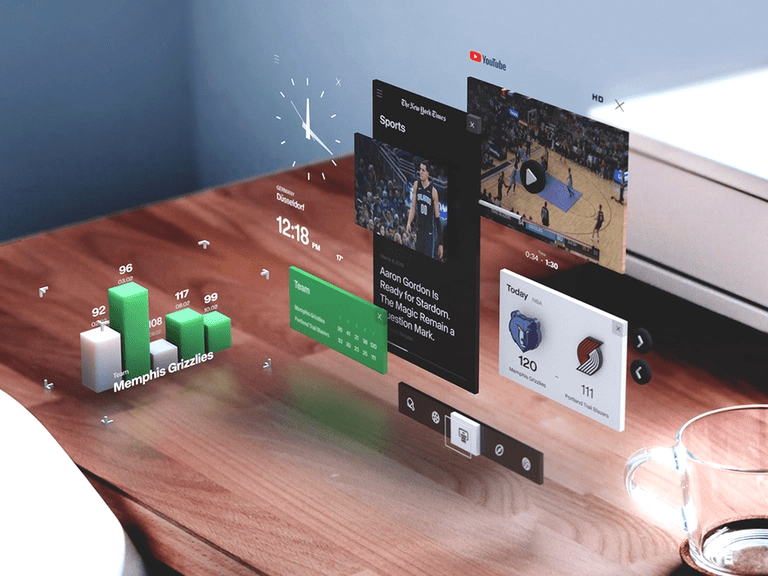
Make Elements Seem Interactive
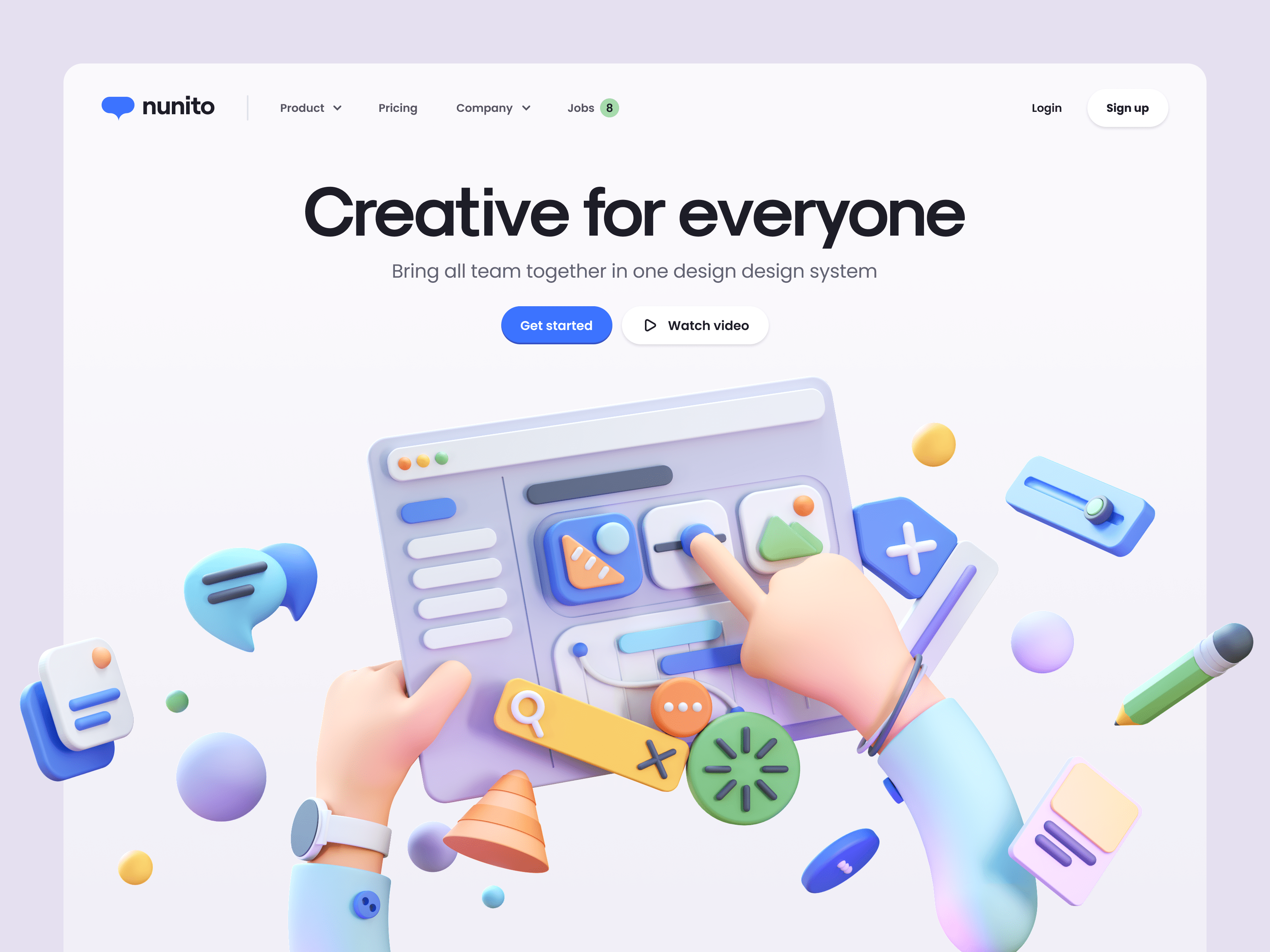
Think about incorporating illustrations with embossed elements resembling buttons that the user can touch and interact with. These types of designs are very eye-catching, especially for websites, mobile applications, and UI design in general.
3D Characters and Avatars
Great for team, chat and forum avatars, explainer content, profile images, app illustrations and more. This type of characters have the ability to visually represent us in places where we are not physically present. You can find with us different types of 3D characters that you can use, in high 4K resolution.
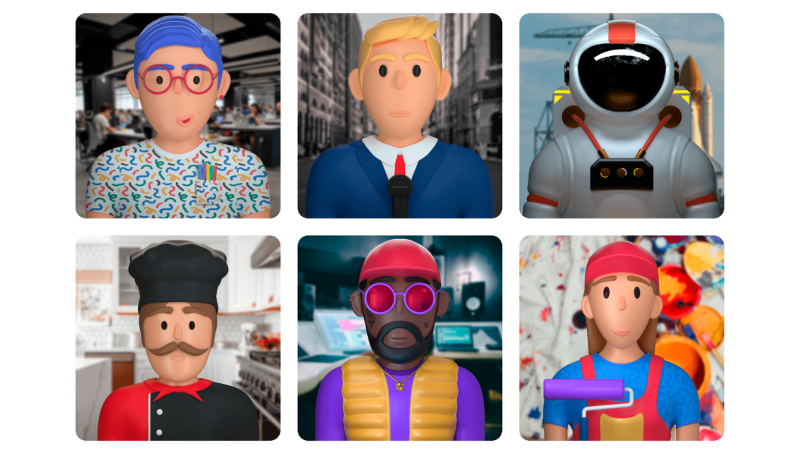
Bring Inanimate Objects To Life
People love to see characters created from inanimate objects and we’ve seen it a lot in 2D illustrations. How about trying this but in 3D? You can get characters with a lot of life and charisma, which is perfect if you’re looking to build a brand around this character.
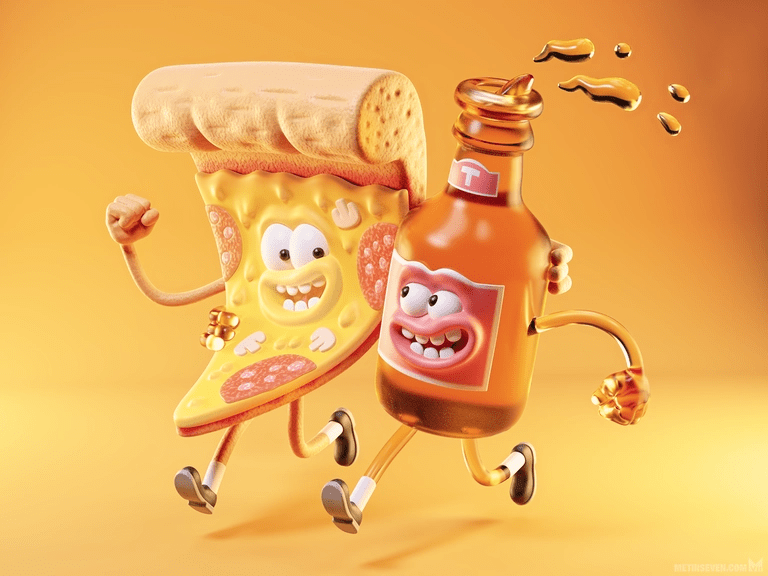
Give Logos Some Dimension
Who said that logos only work in 2D? We think they may be wrong, just look at this 3D version of the Slack logo and how cool it looks! You can implement having both a 2D and a 3D version of your logo, so you can play around with them depending on the design you’re working on and how much emphasis you want to put on the logo.
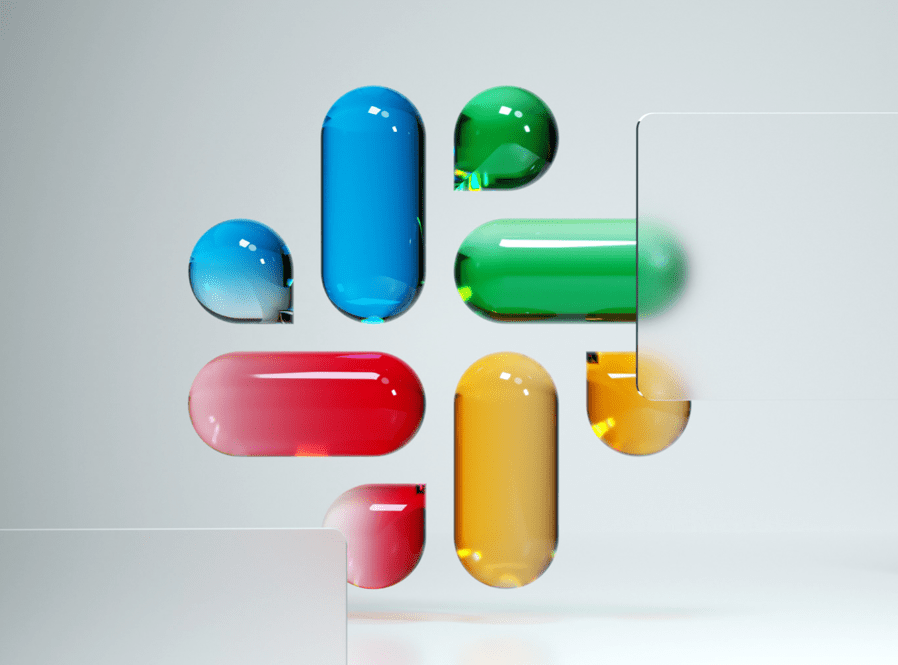
Thus, we can conclude that 3D design has many functions and variations that make it one of the most used tools for expressing realism and an image more in line with what the human eye can see.
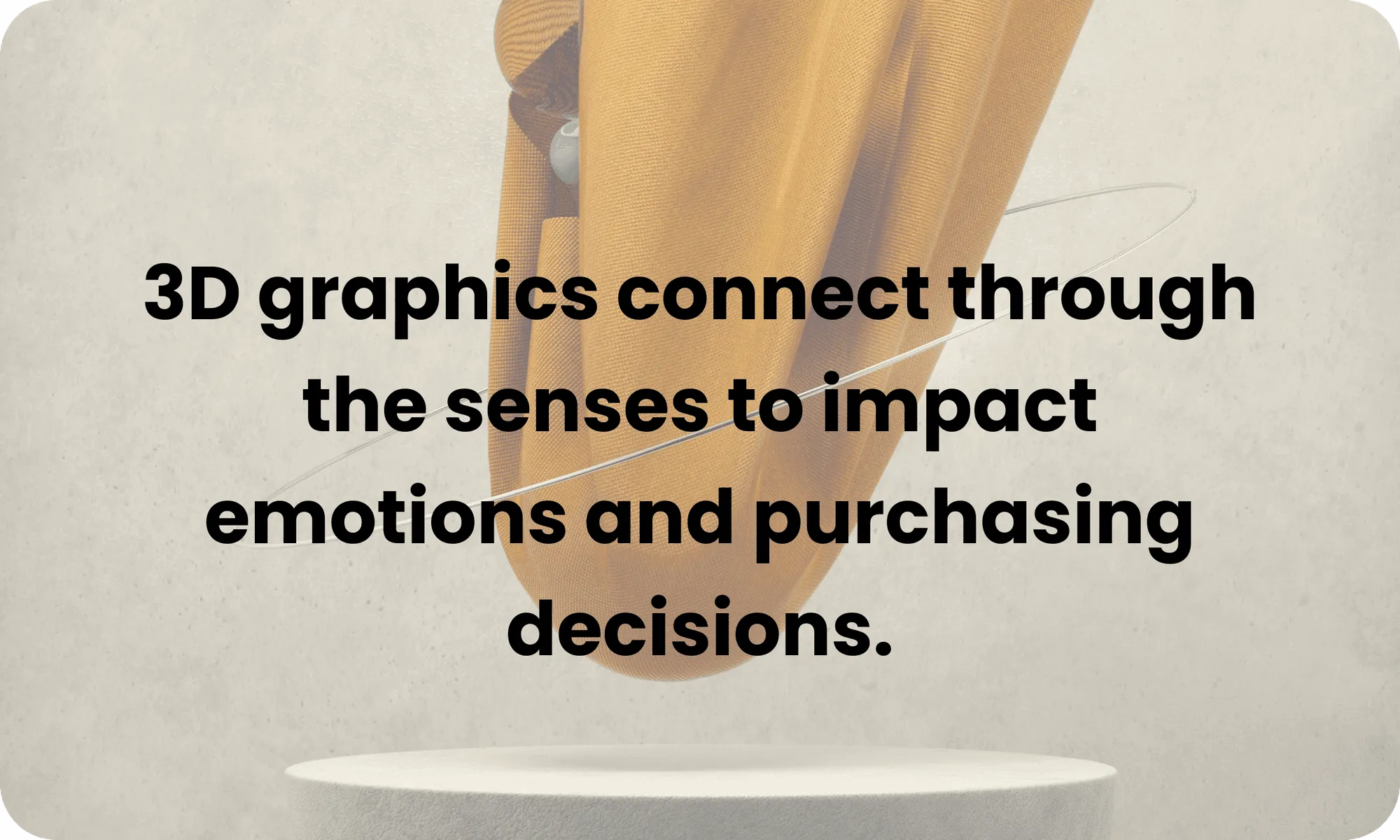
3D can express the real effects and super-sensory experience that can not be achieved by two-dimensional design software. In recent years, more and more designers have applied 3D design software to visual communication design, which has brought viewers an excellent visual experience, left a deep impression, and established a high degree of brand recognition, serving a very good publicity purpose- (Application of 3D Design Software in Graphic design, 2020)
This means that it’s time to update ourselves and start incorporating 3D designs into our projects. This way, not only will we innovate, but we’ll also give a new face to what we want to showcase.
Juan Pablo Sarmiento
System engineer from the National University of Colombia, with special interest over entrepreneurship, marketing, productivity and well-being.
Several projects and startups launched in over 20 years of experience.
Best Seller Deals
Check out time-limited deals on software and designs packs